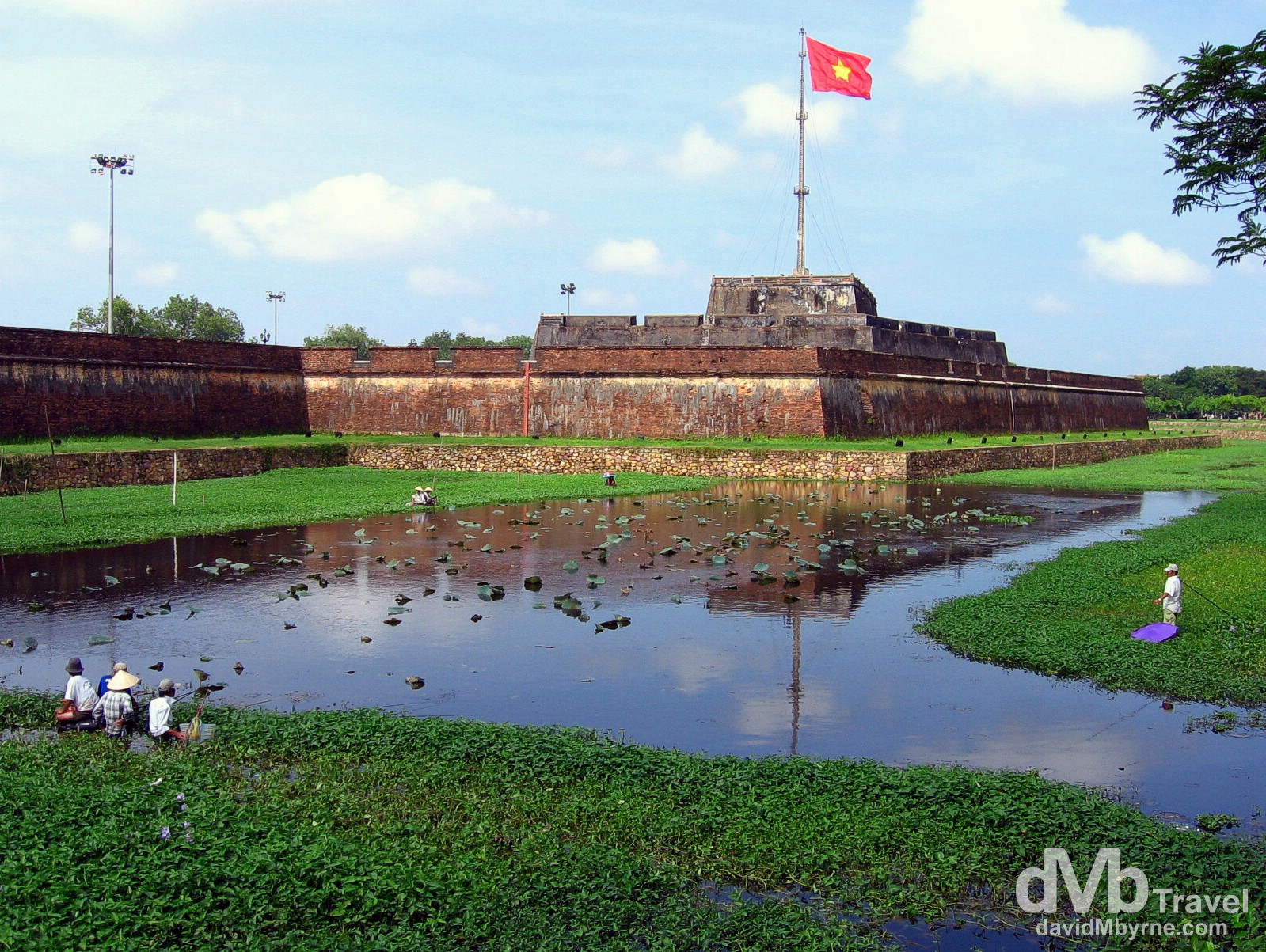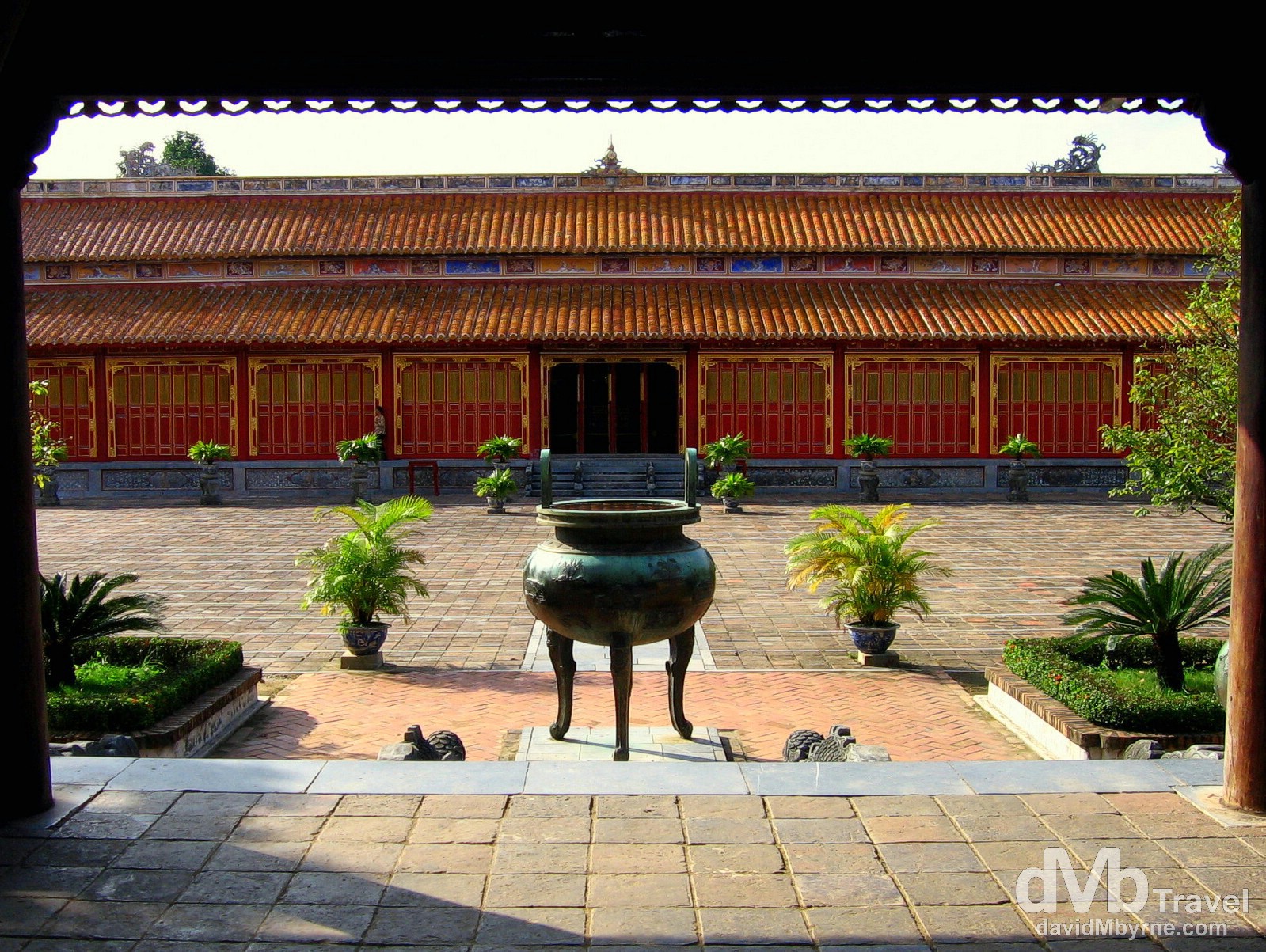Hué in central Vietnam was, from 1802 until 1945, the former imperial capital of the Vietnamese Nguyen dynasty, the capital of unified Vietnam & the political, cultural and religious centre of the country. However, given it’s location near the geographical centre of the country, Hué was the site of some of the bloodiest battles of the Vietnam War. During the 1968 Tet Offensive, most of the old Imperial City was battered by the South Vietnamese Air-Force, US artillery and brutal house-to-house fighting, fighting which resulted in the deaths of over 10,000 people, the majority of them civilians.

Locals in the mote outside the walls of the Imperial City in Hué, part of the city’s UNESCO World Heritage listed Complex of Hue Monuments. Construction on the Citadel walled fortress, which surrounded the Old Imperial City & Palace, began 1804. It was originally constructed of compacted earth but today is mostly brick. The 10 kilometre perimeter wall has 4 sides and 10 fortified gates, each reached via a bridge across the mote. Citadel (![]() ), Hué, Central Vietnam. September 7th 2005 || From a September 2005 visit to Hué, Vietnam
), Hué, Central Vietnam. September 7th 2005 || From a September 2005 visit to Hué, Vietnam
The Citadel’s 37-metre high flag tower seen in the above picture here is a symbol of the city of Hué & is Vietnam’s highest flag tower. It too has quite a (destructive) history – after being erected in 1809, it was extended in 1831, knocked down by a typhoon (which destroyed most of the city) in 1904, rebuilt again in 1915, destroyed again in 1947 by war and finally erected to its present form in 1949.

In the grounds of the ancient UNESCO-listed Citadel in Hué, Central Vietnam. September 7th, 2005 || From a September 2005 visit to Hué, Vietnam
______________________________________________________________________
